Gaochang Ancient City: The Perfect Destination for History Buffs and Adventurers
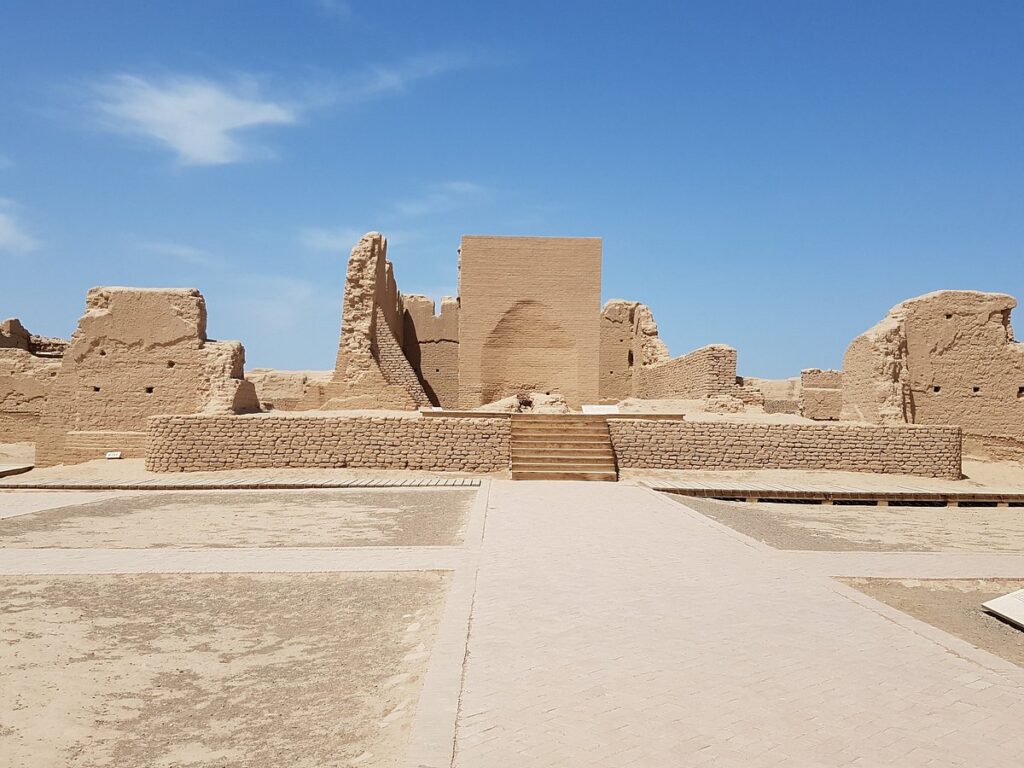
An Essential Guide to Visiting Gaochang Ancient City
Nestled amidst the stunning backdrop of the Huoyan Mountain Range in the Turpan region of Xinjiang, Gaochang Ancient City (高昌故城) stands as a testament to its once-thriving role on the Silk Road. This sprawling site, often referred to as Kharakhoja, evokes the whispers of history, inviting travelers to step into the footsteps of ancient traders and pilgrims who once traversed its pathways. Founded over two millennia ago, Gaochang flourished as a cultural melting pot where diverse ethnicities and religions converged, shaping its legacy as a vibrant oasis city.
Today, the remnants of this grand city reveal the storied past of the Han, Tang, and Uyghur empires, showcasing a remarkable blend of architectural styles that reflect the city’s rich history. While some visitors might find its ruins worn and weathered, the sheer scale of the site and the tales it harbors are captivating. With its expansive grounds and significant historical artifacts, including temples and fortifications, Gaochang offers an immersive experience that transcends time. Whether you are an ardent history buff or simply seeking the allure of ancient civilizations, a visit to Gaochang Ancient City promises to be a memorable journey through the annals of time. Prepare to be enchanted by the remnants of a city that once thrummed with life and culture along one of history’s most famous trade routes.
In This Guide
- An Essential Guide to Visiting Gaochang Ancient City
- The Rich History and Legends of Gaochang Ancient City
- Main Highlights: What You Absolutely Can’t Miss
- Planning Your Visit: A Practical Guide
- Tickets: Prices, Booking, and Tips
- How to Get There: A Complete Transportation Guide
- Local Cuisine and Accommodation Nearby
- Frequently Asked Questions
- Final Thoughts on Your Trip
The Rich History and Legends of Gaochang Ancient City
Nestled in the arid expanse of the Taklamakan Desert, Gaochang Ancient City (高昌故城), known historically as Kharakhoja, stands as a testament to the grandeur of ancient civilizations and their pivotal roles along the Silk Road. Once a bustling oasis city, it emerged as a vital hub for traders, pilgrims, and travelers from various cultures, contributing richly to the tapestry of history that characterizes this remarkable region.
Dating back to the 1st century BC, Gaochang was strategically located on the northern route of the Silk Road, serving as a crucial checkpoint for merchants transporting goods between the East and West. Its significance skyrocketed during the Tang Dynasty (618-907 AD), when it flourished as the capital of the Uyghur Kingdom, a time when the city was not just a commercial center but a melting pot of cultures, ideas, and religions. This cultural diversity is evident in the remnants of Buddhist temples, Islamic mosques, and the architectural styles that reflect influences from Chinese, Persian, and Central Asian traditions.
The city’s layout was meticulously planned, featuring grand walls and intricate structures that once housed vibrant communities. The ruins reveal traces of its past glory, including a majestic administrative center, a prominent Buddhist temple, and a khan fort that dates back to 445 AD. Each stone whispers stories of the people who walked its streets, traded their wares, and exchanged ideas that transcended borders.
One of the most captivating legends associated with Gaochang is that of Xuanzang, a Buddhist monk who journeyed from here to India in 629 AD. His travels inspired the classic Chinese tale “Journey to the West,” where he sought sacred Buddhist texts and spread the teachings of Buddhism back to China. The legacy of Xuanzang’s pilgrimage is a reminder of Gaochang’s role as a beacon of spiritual exploration and cultural exchange.
As time marched on, the city’s significance waned, and it fell into decline. By the 13th century, Gaochang was abandoned, leaving behind a haunting yet beautiful expanse of ruins that invite exploration and reflection. Today, visitors can wander through the remnants of this ancient city, imagining the vibrant life that once thrived within its walls.
While the site may appear somewhat dilapidated, the grandeur of its history is palpable. Enthusiasts of archaeology and history will find it a poignant experience, while the surrounding landscape, dominated by the Flaming Mountains, adds a dramatic backdrop to this relic of the past. As you traverse its pathways, take a moment to absorb the history that lingers in the air—a blend of ancient trade routes, cultural fusions, and legends that continue to shape the identity of this remarkable place.
Gaochang Ancient City is more than just ruins; it is a narrative of resilience, cultural exchange, and the enduring allure of the Silk Road that beckons travelers from around the world to uncover its rich history and legends.
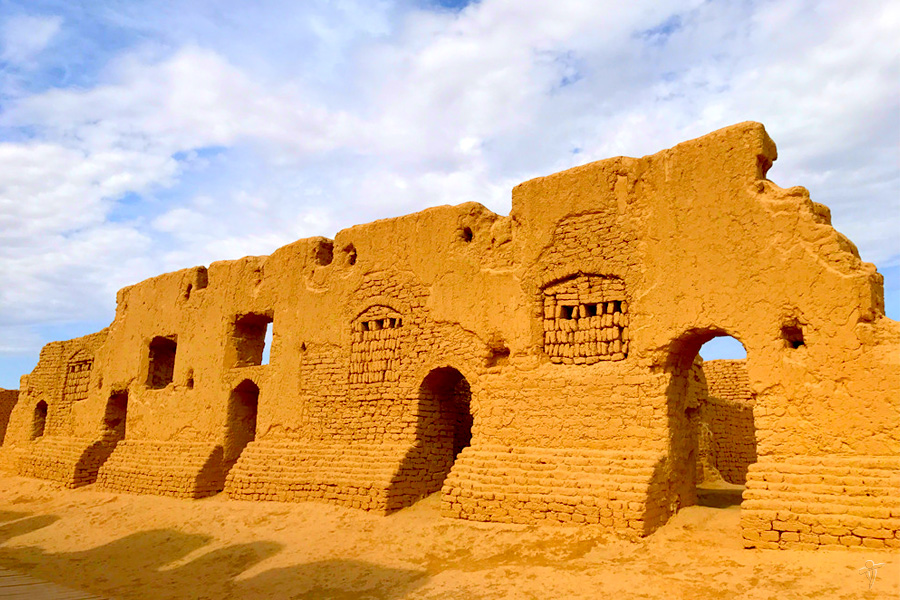
Gaochang Ancient City.
Main Highlights: What You Absolutely Can’t Miss
Nestled near the arid expanses of the Taklamakan Desert, Gaochang Ancient City, also known as Kharakhoja, stands as a testament to the rich tapestry of history woven along the Silk Road. This sprawling site, once a vibrant oasis city, offers travelers a glimpse into a past where traders, pilgrims, and empires converged. Here are the main highlights you absolutely can’t miss during your visit:
1. The City Walls and Gates
The remnants of the ancient city walls, reaching heights of up to 12 meters, provide a striking visual that outlines the city’s grandeur. Enter through the impressive South Gate, which serves as your passage into the historical heart of Gaochang. Take a moment to appreciate the architecture that has stood the test of time, and imagine the bustling life that once thrived within these walls.
2. Khan Fort
Located in the southeastern part of the site, Khan Fort dates back to 445 AD and was a pivotal structure during the city’s heyday. As you explore its ruins, envision the strategic meetings and decisions that shaped the history of this Silk Road hub. The fort’s remnants, with their weathered stones, tell stories of ancient governance and military might.
3. Buddhist Temples
Gaochang is home to several Buddhist temples, including a notably well-preserved small temple. These sites are not only significant for their spiritual heritage but also for the stunning architecture that reflects the syncretism of cultures along the Silk Road. The main Buddhist Temple, in particular, showcases ancient artistry that has captivated visitors for centuries.
4. Cultural Sculptures
As you stroll through the site, be sure to stop and admire the sculptures of important historical figures from Gaochang and Turpan. Each sculpture is accompanied by informative plaques that deepen your understanding of the city’s historical significance. These figures played vital roles in the cultural and economic exchanges that characterized the Silk Road.
5. Astana-Karakhoja Tombs
Just a short drive from Gaochang, these ancient tombs offer a fascinating insight into the burial practices of the era. Many travelers recommend combining your visit to Gaochang with a trip to these tombs, where intricate murals and grave goods reveal the cultural richness of the region.
6. Scenic Views of Huoyan Mountains
The backdrop of the Huoyan Mountain Range adds a dramatic flair to your visit. Depending on the entrance you choose, you’ll encounter stunning vistas that contrast the ancient ruins against the rugged mountains. The landscape itself invites breathtaking photographs and quiet contemplation.
7. Visitor Center and Amenities
Before diving into the exploration, stop by the visitor center for maps and information about the site. Here, you can also purchase water and souvenirs. Given the often scorching temperatures, especially in summer, it’s advisable to stock up on cold beverages to stay hydrated during your adventure.
8. Electric Shuttle Tours
While the allure of walking through the ancient ruins is undeniable, the electric shuttle service is a practical option, especially in the heat. The shuttle allows you to cover more ground and see key areas like the administrative center and the various temple ruins without exhausting yourself.
9. Historical Context at Turpan Museum
Before or after your visit to Gaochang, consider a trip to the nearby Turpan Museum. The museum houses artifacts and exhibits that provide context to the city’s historical significance, enhancing your understanding of its role in the Silk Road network.
Conclusion
Gaochang Ancient City is not just a collection of ruins; it’s a portal into a time when cultures collided and flourished. Each highlight offers a unique perspective on the city’s past, inviting you to reflect on the lives of those who once walked its streets. Make sure to allocate ample time to explore this remarkable site, as its vastness and historical depth require a slow, appreciative approach.
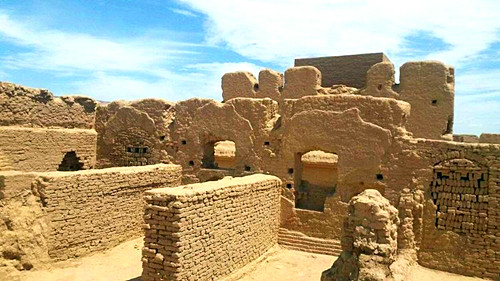
Gaochang Ancient City.
Planning Your Visit: A Practical Guide
Planning Your Visit: A Practical Guide to Gaochang Ancient City
Visiting Gaochang Ancient City, one of the largest ancient ruins in Xinjiang, is an unforgettable journey through history. Nestled against the backdrop of the stunning Huoyan Mountain Range, this site offers a glimpse into the rich tapestry of cultures that flourished along the Silk Road. To help you make the most of your visit, here’s a comprehensive guide to navigating this fascinating location.
Getting There
Location
Gaochang Ancient City is located approximately 40 kilometers east of Turpan, making it accessible via car or organized tours. Given the numerous checkpoints in the area, hiring a local guide or joining a tour group is recommended for a smoother experience.
Transportation Options
– Car Rentals: If you prefer driving, renting a car is an option. Be prepared to navigate through checkpoints.
– Guided Tours: Many tour operators offer packages that include transportation, ensuring you won’t miss any important sights.
– Public Transport: While less common, some local buses may connect Turpan and Gaochang.
Admission Details
Entry Fee
The admission fee is approximately RMB 100, which covers access to the site and the electric cart service that transports visitors around the expansive ruins.
Opening Hours
Gaochang Ancient City typically opens around 8:00 AM and closes at sunset. Check local listings for exact times, especially during holidays.
What to Expect
Site Overview
Gaochang is a sprawling archaeological site, so be prepared for a fair amount of walking. The ruins are extensive, and while some areas are well-preserved, many structures are in a state of decay, primarily due to their adobe construction.
Visitor Facilities
Upon arrival, you’ll find a visitor center equipped with digital imaging displays and lounge areas. Electric carts are available for those who prefer not to walk the entire distance, especially in the hot summer months.
Exploring the Ruins
Key Attractions
– Southeast Gates and City Walls: Marvel at the impressive remnants of the city’s fortifications.
– Khan Fort: Dating back to 445 AD, this fort showcases the ancient city’s strategic importance.
– Buddhist Temples: Explore various temples that highlight the religious diversity that once thrived in Gaochang.
Recommended Time
Allocate at least 4 to 5 hours for your visit. The electric cart tour lasts about 30-40 minutes, but walking through the ruins will take considerably longer if you wish to soak in the details.
Tips for Your Visit
-
Hydration is Key: The sun can be relentless, especially in summer. Bring plenty of water, or purchase it at the gift shop before your tour.
-
Dress Appropriately: Wear comfortable clothing and sturdy shoes, as the terrain can be uneven. A hat and sunscreen are essential for sun protection.
-
Plan for the Weather: If visiting in summer, try to arrive early in the morning or later in the afternoon to avoid the peak heat of the day.
-
Combine Visits: Consider visiting the nearby Astana-Karakhoja Tombs or the Flaming Mountains to make the most of your day in the Turpan region.
-
Engage with History: Take time to read the informative displays throughout the site. They provide valuable context and enhance your understanding of Gaochang’s significance in history.
-
Photography: The stark beauty of the ruins against the dramatic mountain landscape makes for stunning photos, so have your camera ready!
Final Thoughts
A visit to Gaochang Ancient City is not just an exploration of ruins; it’s an opportunity to connect with a pivotal chapter of the Silk Road narrative. While the site may appear underwhelming at first glance, its historical significance and the stories it holds are what make the journey worthwhile. Enjoy your adventure through this ancient oasis city!
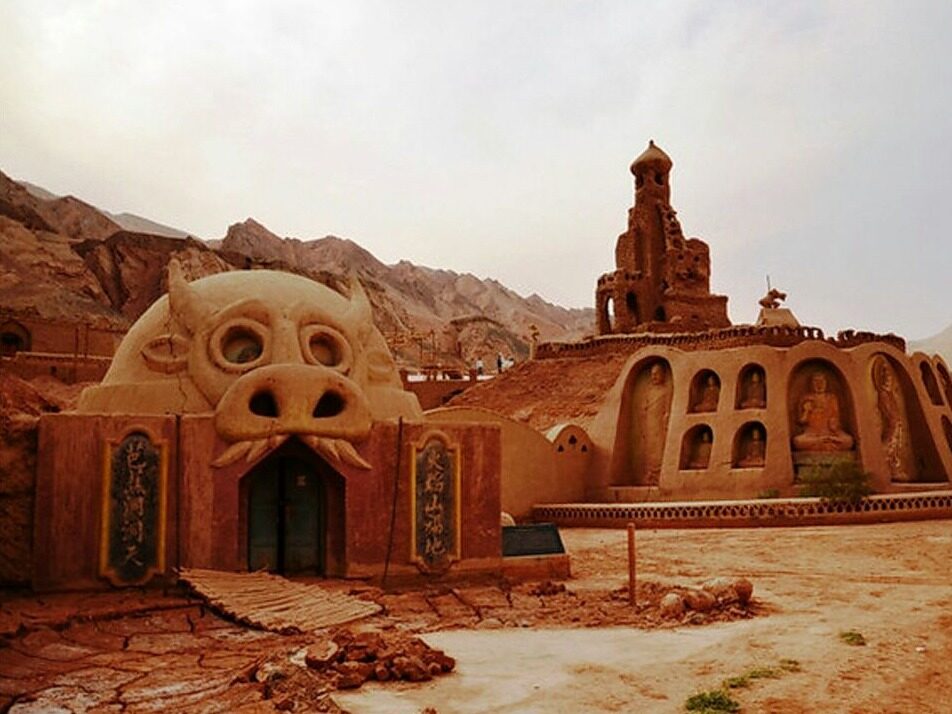
Gaochang Ancient City.
Tickets: Prices, Booking, and Tips
Visiting Gaochang Ancient City is an exhilarating journey into the heart of Xinjiang’s rich history and a must-see for anyone traversing the Silk Road. As you plan your visit, here are some essential details regarding ticket prices, booking options, and helpful tips to enhance your experience.
Ticket Information
Admission to Gaochang Ancient City typically costs around RMB 100 (approximately $15 USD). This ticket includes access to the site as well as a ride on the electric shuttle, which is particularly useful given the expansive area you’ll be exploring.
Booking Your Ticket
Tickets can be purchased on-site at the entrance. However, during peak tourist seasons, it is advisable to arrive early to avoid long lines. If you prefer a more streamlined experience, consider booking a guided tour that includes transportation. Many local tour operators offer packages that cover multiple attractions in the region, including Gaochang and the nearby Astana-Karakhoja Tombs.
Tips for Your Visit
-
Stay Hydrated: The region can get extremely hot, especially during the summer months, so it’s wise to bring plenty of water. While refreshments are available for purchase at the site, prices can be steep.
-
Dress Appropriately: Given the weather conditions, wearing a hat and sunscreen is highly recommended. Comfortable walking shoes will also come in handy, especially if you decide to explore on foot.
-
Plan Your Time: Allocate four to five hours for your visit to fully appreciate the ruins and their historical context. Many visitors report that they needed more time than they anticipated due to the site’s size and the wealth of information available.
-
Consider a Guided Tour: If you want a deeper understanding of the site’s significance, guided tours can provide valuable insights that enhance your visit. However, be aware that guides may primarily speak Mandarin.
-
Explore Nearby Attractions: If time permits, combine your visit to Gaochang with other nearby historical sites, such as the Astana-Karakhoja Tombs or the stunning Flaming Mountains, to make the most of your day.
By keeping these tips in mind, you can ensure a rewarding experience at Gaochang Ancient City, immersing yourself in the storied past of this ancient Silk Road trading hub. Happy travels!
How to Get There: A Complete Transportation Guide
Reaching Gaochang Ancient City (高昌故城) is an adventure that takes you through the heart of Xinjiang’s historical landscape. Whether you’re coming from the bustling city of Turpan or exploring further afield, here’s a comprehensive guide on how to navigate your way to this ancient Silk Road gem.
Getting to Turpan
By Air:
The nearest airport is Turpan’s Jiaohe Airport (TPQ), which is approximately 30 kilometers from the city center. Domestic flights from major Chinese cities like Urumqi, Beijing, and Shanghai frequently service this airport. Once you land, you can take a taxi or arrange for a hotel shuttle to reach the city.
By Train:
Turpan is well-connected by rail, making it accessible from Urumqi and other major cities. The Turpan Railway Station is a modern facility, and trains run regularly throughout the day. A fast train from Urumqi will get you to Turpan in about 2 to 3 hours.
By Bus:
Long-distance buses are another option for reaching Turpan, with services available from various cities within Xinjiang. The bus journey can take anywhere from 3 to 6 hours, depending on your starting point.
From Turpan to Gaochang Ancient City
Once you arrive in Turpan, getting to Gaochang Ancient City is straightforward:
By Taxi:
The most direct and convenient way is to hire a taxi. The ride from the Turpan city center to Gaochang takes approximately 30 minutes and will cost around RMB 50-100 depending on your negotiation skills and traffic conditions. Make sure to have the destination written in Chinese (高昌故城) to show the driver.
By Tour or Private Car:
For a more immersive experience, consider joining a guided tour or hiring a private driver. This option often includes stops at nearby attractions like the Astana-Karakhoja Tombs and the Flaming Mountains, enriching your journey with historical context.
By Public Transport:
If you’re feeling adventurous and want to save some money, take a public bus. Buses leave from the Turpan bus station to Gaochang. However, be prepared for a longer travel time, as the bus may make several stops along the way. It’s advisable to check local schedules, as they can change.
Within Gaochang Ancient City
Upon arrival at Gaochang Ancient City, you’ll find that the site is expansive, covering a significant area. Here’s how to navigate once you’re there:
Entrance and Transportation:
There is an admission fee of around RMB 100, which includes access to an electric cart service that will take you around the main highlights of the ruins. The electric carts are a necessity during the hot summer months, as the site is large and can be taxing to explore on foot.
Walking Paths:
For those who prefer a more personal experience, walking paths meander through the area. However, be prepared for a physical challenge, especially in the heat. It is recommended to carry water and wear sunscreen, as shade is limited.
Additional Tips
- Timing Your Visit: Early morning or late afternoon visits are ideal to avoid the midday heat and to enjoy beautiful lighting for photographs.
- Cultural Considerations: English-speaking guides are scarce, so it may benefit you to do some research on the history of Gaochang prior to your visit.
- Amenities: There’s a gift shop at the entrance offering cold beverages, which is a welcome relief after exploring the ruins.
By following this guide, you’ll ensure a smooth and enriching journey to Gaochang Ancient City, allowing you to soak in the rich history of this remarkable site along the Silk Road. Happy travels!
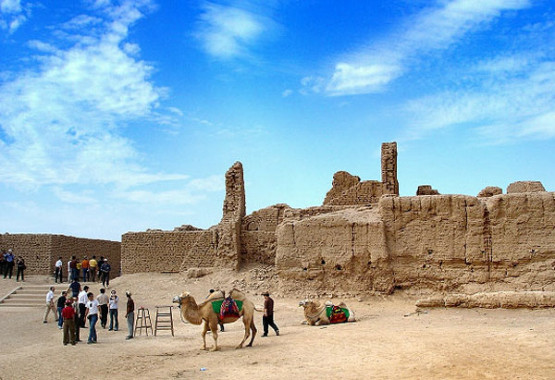
Gaochang Ancient City.
Local Cuisine and Accommodation Nearby
When visiting the ancient ruins of Gaochang (Kharakhoja), it’s essential to immerse yourself not only in its storied past but also in the local flavors and comfortable accommodations nearby. Turpan, the closest city, is rich in Uyghur culture and offers a delightful culinary experience along with various lodging options that cater to a range of travelers.
Dining Delights
1. Uyghur Cuisine at Tuanjie Restaurant
Located just a short drive from the ancient city, Tuanjie Restaurant is a must-visit for anyone looking to savor authentic Uyghur dishes. Here, you can indulge in their famed lamb skewers (kebabs) grilled to perfection, alongside fragrant pilaf and fresh naan. Don’t miss out on trying laghman—hand-pulled noodles served with a spicy sauce and vegetables.
2. Turpan Night Market
For a casual dining experience, the bustling night market in Turpan is a treasure trove of flavors. Stalls brim with local specialties, including samsa (savory pastries stuffed with meat), juicy fruits like grapes and melons, and sweet pastries like dapanji (big plate chicken). The market atmosphere is lively, providing a perfect spot to enjoy local delicacies while mingling with locals and fellow travelers.
3. Da Panji Restaurant
If you’re in the mood for a hearty meal, Da Panji offers a cozy setting and an array of Uyghur dishes. Their signature dish, big plate chicken, is a crowd favorite, often served with a generous helping of potatoes and flatbread. Pair your meal with a refreshing glass of drom chai (milk tea) to complete the experience.
Comfortable Stays
1. Turpan Heli Hotel
This modern hotel offers comfortable rooms with stunning views of the surrounding mountains. It’s conveniently located, making it easy to access Gaochang Ancient City and other attractions. The hotel provides an excellent breakfast buffet featuring both Western and local options, which is perfect for fueling your day of exploration.
2. Turpan Oasis Hotel
For a unique experience, consider staying at the Turpan Oasis Hotel. This charming accommodation is designed with traditional Uyghur architecture and offers a tranquil atmosphere. Guests can enjoy a beautiful garden and spacious rooms. The hotel’s restaurant serves delicious local cuisine, giving you a taste of the region without venturing far.
3. Karamay Hotel
Located near the city center, Karamay Hotel is another great option for travelers. With well-furnished rooms and modern amenities, it provides comfort after a day of exploring. The hotel staff is known for their hospitality, and they can assist you in arranging tours to nearby attractions, including the Gaochang ruins.
Final Thoughts
Whether you’re wandering through the ancient ruins of Gaochang or sampling the delightful local cuisine, Turpan offers a rich cultural experience that will leave you with unforgettable memories. Enjoy the unique blend of history, flavors, and warm hospitality that this region has to offer.
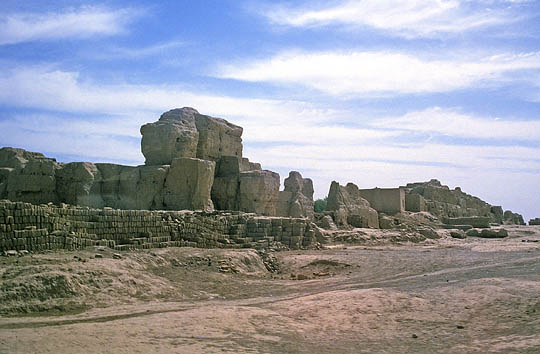
Gaochang Ancient City.
Frequently Asked Questions
Frequently Asked Questions about Gaochang Ancient City
-
What is the best way to reach Gaochang Ancient City?
Gaochang Ancient City is located approximately 40 kilometers east of Turpan. The best way to reach the site is by hiring a local driver or booking a guided tour, as public transportation options may be limited. Be prepared for several checkpoints along the way, which a local guide can help navigate. -
How much is the entrance fee, and what does it include?
The entrance fee is around RMB 100, which includes access to the site and a ride on the electric shuttle cart. The cart tour is particularly useful for those who may find walking long distances challenging due to the heat. -
How long should I plan to spend at the site?
Allocate at least 4 to 5 hours to fully explore Gaochang Ancient City. While the electric cart tour takes about 30-40 minutes, walking around the extensive ruins and taking in the history can take significantly longer. -
What should I bring with me when visiting Gaochang?
Make sure to bring water, sunscreen, a hat, and comfortable footwear. The site can get extremely hot, especially during summer months, and staying hydrated is crucial. Consider bringing snacks, as food options may be limited and prices can be high within the site. -
Are there guided tours available at the site?
Yes, there are guided tours available, but many guides primarily speak Mandarin. If you require an English-speaking guide, it may be helpful to arrange this in advance through your tour operator. -
What are the highlights to see at Gaochang Ancient City?
Key highlights include the Southeast Gates, the Khan Fort dating back to 445 AD, and various temple ruins scattered throughout the site. Don’t miss the sculptures of important historical figures that provide context to the city’s rich history. -
Is it accessible for visitors with mobility issues?
While the site has paved paths and an electric shuttle service, some areas may still be challenging for visitors with mobility issues. Using the shuttle is highly recommended for those who cannot walk long distances, but be aware that the shuttle does not stop at every scenic spot. -
What is the best time of year to visit Gaochang Ancient City?
The best time to visit is during the spring (April to June) and autumn (September to October) when temperatures are milder. Summer can be excessively hot, making it less comfortable for exploring the ruins.
Final Thoughts on Your Trip
As you wrap up your journey through Gaochang Ancient City, take a moment to reflect on the layers of history that envelop this remarkable site. Once a bustling oasis on the Northern Silk Road, Kharakhoja, as it was known, served as a melting pot of cultures, ideas, and trade for centuries. Today, the ruins stand as a poignant reminder of its glorious past, inviting you to imagine the vibrant life that once thrived amidst its walls.
Whether you explored the expansive grounds on foot or opted for the convenience of an electric cart, the remnants of temples, fortifications, and bustling marketplaces will surely ignite your curiosity. The breathtaking backdrop of the Huoyan Mountains adds to the allure, creating a landscape where history and nature intertwine beautifully.
As you leave this ancient city, carry with you the stories of the traders, pilgrims, and empires that once called Gaochang home. Let the echoes of the Silk Road inspire your own travels, reminding you that every journey is a chance to connect with the past and discover new perspectives. Embrace the spirit of adventure, and may your future explorations be as enriching and enlightening as your visit to this remarkable site. Safe travels!